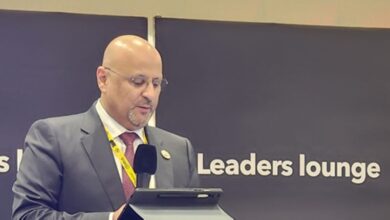Central Asia – European Union strengthening regional cooperation, shaping a shared future
Central Asia and the European Union are deepening cooperation across trade, energy, connectivity, digitalization, climate action, and security, aiming to build a sustainable, long-term strategic partnership.

By Bakhtiyor Mustafayev
- Central Asia and the EU are strengthening ties through political dialogue, economic cooperation, and strategic initiatives.
- Enhanced Partnership and Cooperation Agreements (EPCA) are expanding the legal and institutional foundation of collaboration.
- Key focus areas include energy, transport, digital connectivity, climate change, and human capital development.
- Major joint projects include the Global Gateway strategy, Trans-Caspian route modernization, and digital integration initiatives.
- The upcoming summit in Samarkand is expected to elevate the partnership to a new level of strategic coordination.
Samarkand the historic city, will host the first-ever high-level meeting, on April 3–4, between the European Union and the Central Asian countries, marking a significant milestone in regional diplomacy.
This landmark event represents a new chapter in relations between the two regions, signaling a shift toward deeper and more strategic multilateral cooperation. The very organization of this dialogue underscores the European Union’s growing interest in the region and its strong commitment to building long-term partnerships with the Central Asian states.
European Council President António Costa emphasized the importance of the upcoming summit, stating that “We live in a world of chaos and fragmentation, where the only possible solution for the EU is to strengthen partnerships for peace and prosperity. In a multipolar world, more active and targeted engagement is necessary.” He affirmed that the first EU–Central Asia summit will serve as a vital step toward reinforcing mutual commitments to jointly promote peace, stability, and sustainable development in the region.
Equally notable was the statement by European Commission Vice President Margaritis Schinas, who stressed the EU’s strategic focus on Central Asia amid global instability. He remarked that the EU is taking Central Asia particularly seriously in the context of current geopolitical turbulence. At a time when the world is becoming increasingly unstable and insecure, Central Asia remains a region of positive changes. Our cooperation with Central Asia is not a one-time event; we are focused on a long-term perspective.
Observers have noted that the growing cooperation between the European Union and Central Asia has, in recent years, taken on a more sustainable, structured, and mutually beneficial form reflecting a shared commitment to deeper, long-term engagement.
Formation of Legal and Institutional Foundations of Partnership
Since the emergence of newly independent states in Central Asia, the European Union has actively pursued the establishment of bilateral partnerships with the region. Beginning in 1991, the EU’s strategy toward Central Asia has evolved through several key phases, shaped by shifts in the international system, the progression of European integration, and Central Asia’s growing importance on the global stage, particularly in terms of energy resources, transit potential, human capital, and its critical geostrategic position.

The first major initiative marking large-scale cooperation between the European Union and Central Asia was the “Technical Assistance to the Commonwealth of Independent States” (TACIS) program, which ran from 1991 to 2006. This program played a pivotal role in supporting the region’s political and economic reforms, the transition to a market economy, and the reinforcement of the rule of law. Over its duration, TACIS facilitated the implementation of more than 3,000 projects, with total funding exceeding 7 billion euros.
A key achievement of TACIS was the conclusion of Partnership and Cooperation Agreements with Central Asian countries.
It is important to note that in the 1990s, the EU’s policy in Central Asia was distinctly resource-oriented, as the region was primarily seen as a source of energy. The EU actively promoted transport and logistics projects, such as the TRACECA project, to facilitate hydrocarbon deliveries to Europe.
After 2001, the EU’s focus in Central Asia shifted towards security cooperation, with key priorities including the fight against terrorism and drug trafficking originating from Afghanistan. This period saw the launch of major initiatives such as the Border Management Program (BOMCA) and the Central Asia Drug Action Program (CADAP).
The next significant milestone came in 2007 with the adoption of the first EU Strategy for Central Asia. Unlike the Eastern European CIS states, which were covered under a separate program, the European Neighborhood and Partnership Instrument, this strategy treated Central Asia as a distinct, unified region. It also introduced a structured mechanism for annual high-level meetings between the foreign ministers of the EU and Central Asian countries, strengthening diplomatic and strategic dialogue.
What’s more is that, under the framework of the 2007 Strategy, the EU launched a wide range of initiatives spanning regional cooperation, environmental and energy projects, as well as efforts in security, human rights, and rule of law. However, experts note that despite its ambitious scope, the Strategy fell short of expectations. Its overly broad and complex nature, along with several structural shortcomings, limited its effectiveness and failed to generate strong interest or engagement from the Central Asian nations.
Moreover, despite several revisions aimed at enhancing its effectiveness, the 2007 Strategy delivered limited results. Many of the implemented initiatives and joint programs remained modest in scope. Although originally intended to span a decade, the Strategy was only replaced after twelve years, reflecting the challenges in fully realizing its objectives.
Central Asia in a New Dimension
The neighborhood and regional partnership policy pursued by the Republic of Uzbekistan under the leadership of President Shavkat Mirziyoyev has played a pivotal role in reshaping the European Union’s approach to Central Asia.
As a result of joint efforts, Central Asia has witnessed the emergence of a completely new political atmosphere. Within just a few years, numerous long-standing issues that had persisted for decades have been addressed. This progress has transformed the region into a space of mutually beneficial cooperation and sustainable development.
In other words, Central Asia has evolved beyond its traditional role as a mere bridge between East and West, which is now emerging as an independent and influential actor in international relations.
In this context, the statement by then-European Commission Vice President Josep Borrell at the EU-Central Asia Transportation Investors Forum in January 2024 is particularly indicative that Central Asia was somewhere in the wilderness, and now you are at the center of everything.
This evolving perception of the region’s importance is mirrored in the European Union’s strategic orientation. When the EU adopted its new Strategy for Central Asia in 2019, it built on prior initiatives with a renewed focus on fostering regional cooperation as a core principle. This commitment is clearly reflected in the implementation of all ten priority areas outlined in the Strategy: human rights, democratization, education, economic development, energy, transport, ecology, water management, intercultural dialogue, and regional security.
This is further reflected in the strategic language of the document, which introduces key concepts such as “connectivity” (enhancing inter-regional interconnectedness), “inclusivity” (ensuring openness to all external partners), and “sustainability” (building resilience against risks and threats). These terms encapsulate the core aspirations of the Central Asian countries and signal the EU’s alignment with their long-term development goals.
At present, the countries of the region, considering both internal priorities and the evolving global geopolitical landscape, are keen to attract European investments, technologies, and innovations to address key challenges related to stability and sustainable development. Their focus spans critical sectors such as the economy, industry, energy, transport, human capital, and climate change.
Multifaceted Cooperation
The European Union’s acknowledgment and consideration of the interests of Central Asian countries have significantly deepened comprehensive cooperation across key areas, including politics, security, trade, investment, and cultural-humanitarian relations.
In particular, the regulatory and legal framework governing EU–Central Asia relations is being actively strengthened. In recent years, Brussels has been developing its ties with the five Central Asian countries through Comprehensive Partnership and Cooperation Agreements (CPCAs).
To date, Kazakhstan and Kyrgyzstan have already signed such agreements with the EU. In March 2024, Turkmenistan signed a Protocol to the CPCA, while Tajikistan and Uzbekistan are in the final stages of completing the signing process.
An additional impetus to the development of cooperation was provided by the Joint Roadmap for Deepening Ties between the EU and Central Asia, adopted in October 2023. The document outlines key areas of engagement, including inter-regional political dialogue, the expansion of trade and economic relations, energy development, the transition to a climate-neutral economy, and the joint response to common security challenges.
The European Union and the Central Asian countries maintain an active political dialogue at the highest levels. Two leadership meetings were held in Astana in October 2022 and in Bishkek in June 2023 during which the parties reviewed promising areas of cooperation and reaffirmed their commitment to further strengthening the comprehensive partnership.
Additionally, a series of ministerial meetings have been held, the most recent of which took place last year on March 27, 2024, in Ashgabat. The meeting focused on preparations for the upcoming EU–Central Asia summit in Samarkand and addressed a broad range of issues, including the regional impact of the current geopolitical situation, the development of transport and digital connectivity, and cooperation in the fields of energy, water resources, trade, education, and science.
The strengthening of political dialogue is opening up new opportunities for expanding trade and economic ties, as well as fostering industrial cooperation. The European Union remains the largest investor in Central Asia, accounting for over 40% of foreign direct investment in the region over the past decade, amounting to more than 100 billion euros. This cooperation spans key sectors such as pharmaceuticals, construction, energy, and agriculture.
One of the strategic areas of partnership has been the development and processing of minerals. In the context of diversifying the supply of critical materials, Central Asian countries are assuming an increasingly important role in the global market. Memorandums of Understanding signed with Kazakhstan in 2022 and Uzbekistan in 2024 enable European companies to deepen cooperation with regional partners in high-technology sectors.
The implementation of the “Global Gateway” strategy in the transport and logistics sector is gaining particular significance. Central Asia is evolving into a key transit hub within Eurasian connectivity, with the Trans-Caspian International Route playing a pivotal role in this transformation.
Among the infrastructure projects aimed at enhancing the region’s logistics potential, the construction of the China–Kyrgyzstan–Uzbekistan railway holds particular significance. This project is expected to strengthen regional connectivity and facilitate greater integration into global transport networks.
A new impetus to the development of cooperation was provided by the outcomes of the first Investment and Transport Forum of Central Asian and EU countries, held in January 2024 in Brussels. During the forum, a funding commitment of 10 billion euros was announced for the modernization of the Trans-Caspian International Transport Route, a key corridor linking Asia with Europe.
Another key area of partnership with the EU is Central Asia’s digital integration into the global economy. In March 2024, during the regional visit of EU Commissioner J. Šimečka, the TEI Digital Connectivity project was launched. This initiative focuses on developing satellite communications, expanding broadband internet access, supporting digital innovation, and strengthening cybersecurity. These efforts aim to foster a more inclusive and sustainable economic model while helping to bridge the digital divide across the region.
An important aspect of EU–Central Asia cooperation is the joint effort to combat climate change and advance the transition to sustainable development. Key initiatives in this area include the “SECCA” project under the “Team Europe” strategy, the Central Asia Water and Energy Program (CAWEP), and the “Green Central Asia” initiative. These programs focus on effective water resource management, the development of environmentally friendly energy sources, and enhancing the region’s resilience to climate change.
Strategic Priorities for the Future
On the whole, the current state of relations between the Central Asian countries and the European Union reflects a shared commitment to deepening cooperation. For the region, the EU remains not only a vital trade, economic, and investment partner but also a key reference point in advancing sustainable development, driving digital transformation, and addressing environmental challenges.
It is apparent that a comprehensive dialogue between the parties is becoming an essential instrument in shaping a new framework for cooperation. Deepening this dialogue allows for effective adaptation to global challenges while fostering more targeted and substantive collaboration in priority areas such as energy, digitalization, security, and infrastructure development.
In light of the above, it is appropriate to consider several proposals that could support the establishment of a long-term, strategic partnership. These proposals would aim to build on existing achievements, address shared challenges, and further enhance cooperation across key sectors of mutual interest.
For the EU:
- Maintain a strong and consistent commitment to supporting initiatives and processes that promote and strengthen regional cooperation.
- Develop flexible and adaptive mechanisms for engagement with Central Asian countries, enabling the EU to tailor its strategies and policies to evolving regional and global dynamics.
- Prioritize key areas of cooperation, such as transport, energy, climate change, and human capital development that are critical to the region’s long-term stability and sustainable growth.
- Strengthen the institutional and regulatory foundations of the partnership by finalizing the signing of Enhanced Partnership and Cooperation Agreements with all Central Asian countries, facilitating their accession to the GSP+ program, increasing the representation of Central Asian states in EU institutions, and supporting the establishment of EU institutional branches within the region.
For Central Asia:
- Reaffirm a strong commitment to fulfilling all obligations within the framework of cooperation with the EU, thereby reinforcing Central Asia’s image as a reliable and responsible strategic partner.
- Continue pursuing policies that deepen regional cooperation and promote constructive engagement with external partners, thereby reinforcing Central Asia’s role as a space for partnership, dialogue, and shared prosperity.
- Support the implementation of the EU’s Central Asia Strategy, highlighting the region’s commitment to advancing cooperation with Brussels and enabling the EU to more effectively plan its initiatives and set strategic priorities.
- Initiate cultural and humanitarian programs that enhance public diplomacy, foster mutual understanding, and strengthen the positive image of Central Asian countries within the EU; and the EU within Central Asia.
Therefore, the upcoming EU–Central Asia summit in Samarkand presents a unique opportunity to further invigorate multifaceted cooperation between the two regions. It is expected to elevate bilateral relations to a qualitatively new level, which is marked not only by the expansion of economic ties but also by deeper coordination in strategically important areas, thereby laying a solid foundation for a long-term, sustainable partnership.
Bakhtiyor Mustafayev
Deputy Director of the Institute for Strategic and Regional Studies under the President of the Republic of Uzbekistan.













